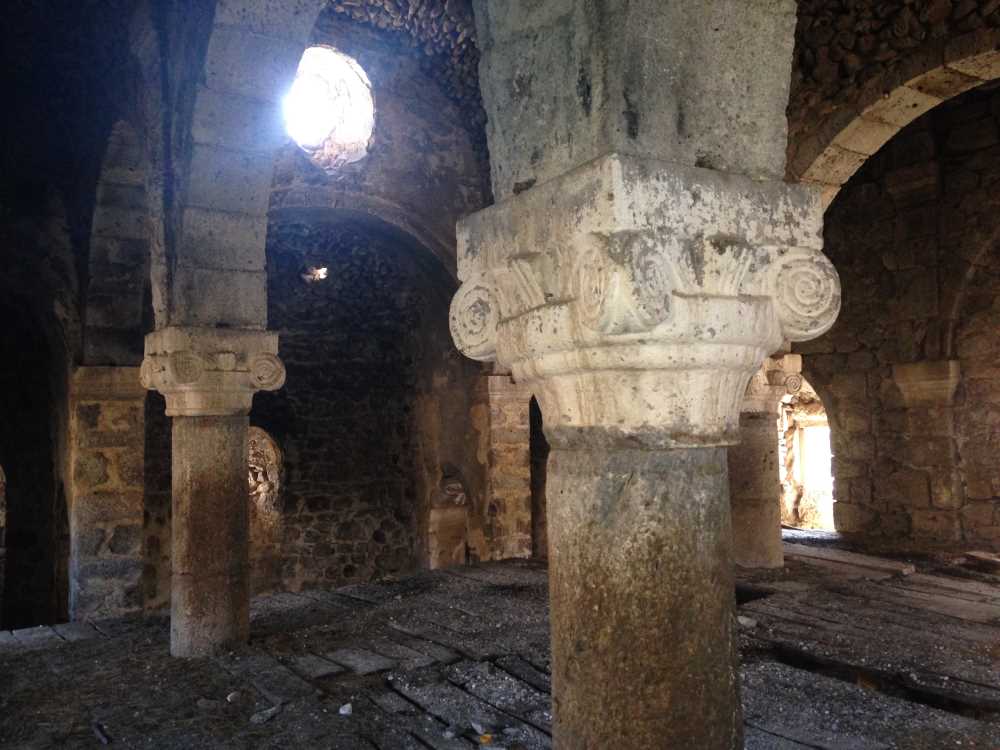Kırkharman Church, also locally known as Akpınar Church, is a historic structure located within the boundaries of Akpınar Village in the Yağlıdere district of Giresun Province, Türkiye. It was registered as an immovable cultural property by the Trabzon Regional Council for the Protection of Cultural and Natural Assets with decision number 4739 dated July 3, 2003. Due to its location along the historical Silk Road route, the church is considered significant both strategically and culturally.

Kırkharman Church - (Kültür Portalı)
Historical Background
The building dates back to the 19th century, most likely around 1850. It is believed to have been built by the local Greek Orthodox community and fell into disuse following the 1923 population exchange between Greece and Türkiye. Having remained functionless for approximately 96 years after the exchange, the church stands out as one of the longest-surviving historic religious structures in the Eastern Black Sea region.
Architectural Features
The church has a three-nave basilical plan with longitudinally arranged central and side naves. It was built using rubble stone masonry, with materials including rubble stone, finely dressed stone, and cut stone. The ceiling is divided into three separate sections with barrel vaults, constructed using the same masonry technique. Semicircular arches were used to stabilize the interior space. Traditional architectural features are reflected in the use of beam-arch systems, a tripartite apse layout, and Ionic capital piers. Four main piers serve as structural supports, adorned with Ionic-style capitals.
The church lacks a narthex. On the western façade is a rectangular entrance door framed with rectangular stone jambs and topped by an empty niche. Single rows of rectangular windows are found on the north and south façades, while the west façade contains two rows of windows, and the eastern apse section has three window openings. The original roof was a hipped roof, which has since been replaced with a concrete version mimicking the original form. The entrance arch still stands intact. The church plan adheres closely to the classical basilica layout while incorporating local stonemasonry craftsmanship.

Kırkharman Church - (Kültür Portalı)
Use and Preservation History
After 1923, the church lost its original function and was used as an animal shelter for a long period. Reports indicate that significant damage occurred to the interior during this time. Remarkably, the structure has remained standing without restoration for approximately 169 years, making it one of the most notable surviving historic buildings in the Eastern Black Sea region.
Between 2016 and 2019, the building was cleaned and removed from its function as a barn/storehouse through efforts led by the Giresun Governorship Tourism Infrastructure Services Union (GİRTAB), the Provincial Directorate of Culture and Tourism, and Giresun University. During this period, Associate Professor Gazanfer İltar of Giresun University’s Faculty of Fine Arts provided information on the historical context, architectural value, and potential restoration plans for the church.
Environmental and Demographic Context
The church is located in the Kırkharman plateau, which, before the population exchange, housed around 50 households. Today, only two households reside there permanently, although the population increases somewhat during the summer months. After the population exchange, the village was largely abandoned.
Tourism and Future Plans
Kırkharman Church holds strategic importance for cultural tourism not only due to its architectural value but also because of its location on the historic Silk Road route. It is aimed to be restored and incorporated into the region’s cultural tourism offerings. The seasonal population movement and the church’s geographical position further support tourism potential in the area.
Cultural and Historical Significance
Kırkharman Church is one of the few surviving architectural examples that reflect the tangible heritage of the Greek Orthodox presence in the Giresun region. Its construction around 1850 and abandonment following the population exchange mark a significant historical turning point. The building’s ability to remain standing for 169 years can be attributed to both its solid construction and the limited human intervention over the years.


